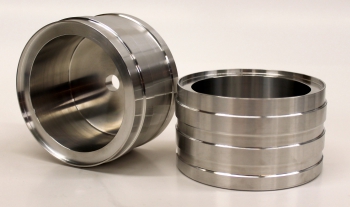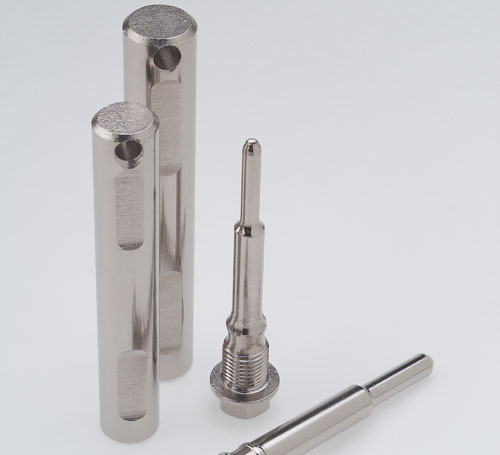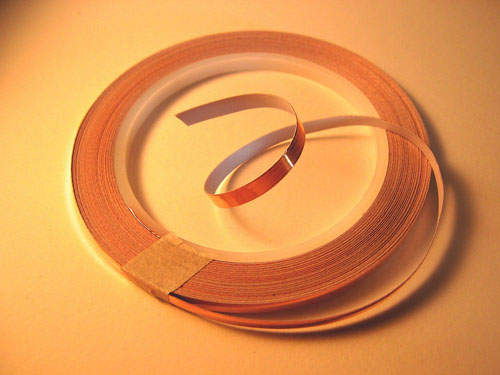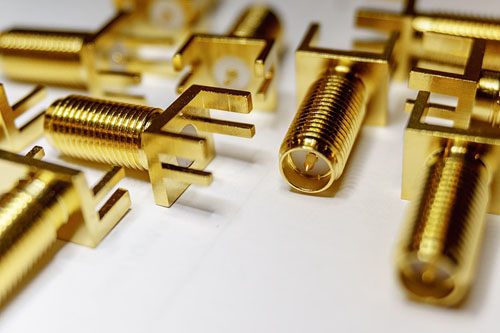Plating is a process of covering the surface of a material or workpiece with another metal. A thin metal layer is formed on the workpiece by electroplating with electric current. This process can be used to coat and protect metals and other materials. Electroplating has many useful benefits, such as inhibiting corrosion, changing electrical conductivity, improving wear, improving solderability, reducing friction, improving heat resistance and hardening materials.
Electroplating is the most common electroplating method. Electroplating uses electric current to dissolve positively charged metal particles (ions) in a chemical solution. The positively charged metal ions are attracted to the material to be plated, which is the negatively charged side of the circuit. Then the parts or products to be plated are placed in the solution and the dissolved metal particles are pulled to the surface of the material. Electroplating can provide a smooth, uniform and fast coating for the material being plated, thereby effectively changing the surface of the material. Electroplating can involve many different steps and processes, including cleaning, tapping, electrochemical deposition, pulse plating, and brush plating. The longer the object is in the solution, the thicker the coating.
Plating will change the quality and performance of the material, thereby changing its use in precision machining. Here, we analyze the different types of metal plating and their effects on materials, and delve into how these processes affect precision machining.
Popular Metal Plating Processes Include:
Chrome Plating
Chrome plating is usually used in furniture and automotive decoration products, but it can also improve corrosion resistance, abrasion resistance and hardness, so that it can be used in industrial applications where wear is considered. Steel is usually chrome plated, here called hard chrome plating, and sometimes used to restore the tolerances of worn parts.
Chromium plating is an electroplating process that usually involves the use of chromic acid called hexavalent chromium. Another industrial choice is a trivalent chromium bath composed mainly of chromium sulfate or chromium chloride.
Sometimes chromate is applied to the zinc coating to protect the zinc, and in some cases to change the color of the metal, such as green or black zinc coating.
Nickel Plating
Nickel is a popular electroplating metal, especially because it can be used for electroless plating. Nickel plating often covers household products, such as door handles, tableware and shower devices, to improve decoration, friction resistance, corrosion resistance and abrasion resistance. Nickel is usually combined with copper and aluminum, but it can also be used on a variety of metals and as a base coating for chromium.
In electroless plating, nickel-phosphorus alloys are used. The percentage of phosphorus in the solution can vary from 2% to 14%. Higher phosphorus content can improve hardness and corrosion resistance. Lower phosphorus content can improve solderability and magnetic properties.
Copper Plating
Another cost-effective option that provides high electrical conductivity, copper plating is often used as a pretreatment for touch-coating for subsequent metal plating. But this is also a popular plating metal for electronic components. Copper plating is an efficient but low-cost metal used for electroplating.
There are three types of copper plating process: alkaline, weak alkaline and acid. Higher alkalinity levels provide excellent projection capabilities, but require lower current density and enhanced safety precautions.
Gold Plating
Gold is highly regarded for its high oxidation resistance and conductivity. Gold plating is one of the easiest ways to impart these characteristics to metals such as copper and silver. This process is usually used for jewelry decoration and improving the conductivity of electronic parts (such as electrical connectors).
Consider hardness and purity of the gold when determining factors such as optimal bath mixture and length of immersion.
Silver Plating
Like gold, silver is also used for electroplating decoration, which is decorative and improves conductivity. Generally, since silver is cheaper than gold and can be plated well with copper, silver can be used as a more cost-effective plating solution.
However, silver plating has its limitations: it is susceptible to moisture and electric corrosion. Silver plating is not suitable for high-humidity applications, because silver is prone to cracking and peeling, which may eventually expose the base parts.
Electroplating Effect On Machined Parts
Electroplating is used to provide protective coatings, decorative appearance or to modify the performance of engineering materials. Electroplating improves the chemical, physical and mechanical properties of the part, thereby affecting the performance during processing. Electroplated machining part can be used to accumulate part in a smaller size, making it easier to process, and increase weldability, conductivity or reflectivity, and at the same time improve the wear resistance and corrosion resistance of the parts.
Other Plating Method
In addition to common electroplating, there are several common plating methods, namely electroless plating and immersion plating.
Electroless Plating
Electroless plating is a plating method that does not use an external power source. Electroless plating involves a chemical reaction that causes the reduction of metal atoms. When metal ions (particles) are mixed with the reducing agent, when they come into contact with the catalytic metal (triggering the reaction), the solution turns into a metal solid. This results in the metal being plated with a solid layer of plated metal.
Electroless plating or autocatalytic plating is suitable for materials of various sizes and shapes, and does not require external electricity or plating baths, thereby reducing costs. However, electroless plating is slower than electroplating, cannot form thick plates, and is more difficult to control than electroplating.
The effects of electroless plating on the final product include preventing base metal corrosion, increasing the size of the workpiece, and changing the weldability, reflectivity and conductivity.
Immersion Plating
Immersion plating involves immersing a metal in a solution of metal ions from a more precious metal. The ions of noble metals are more stable, so there is a natural “pull force”, which can replace the surface metal ions of low noble metals with a thin layer of rare metal ions. Dip plating is a slower process and can only be used with precious metals such as gold, platinum or silver.
immersion plating will only be covered by a thin coating, and immersion plating has a poor adhesion quality. In this case, the coating will not “firmly” adhere to the base material.
The effects of immersion plating on the final product include improved corrosion resistance, changed electrical conductivity, changed appearance, greater hardness, torque tolerance, and improved bonding ability.
Conclusion
Metal plating can change the properties of materials for precision machining and change the quality of the final product. Understanding the effects of electroplating on the workpiece means evaluating the advantages and disadvantages of electroplating and how it affects processing. Talk to your precision machining supplier about how electroplating will affect your work piece and whether electroplating is suitable for your project.






